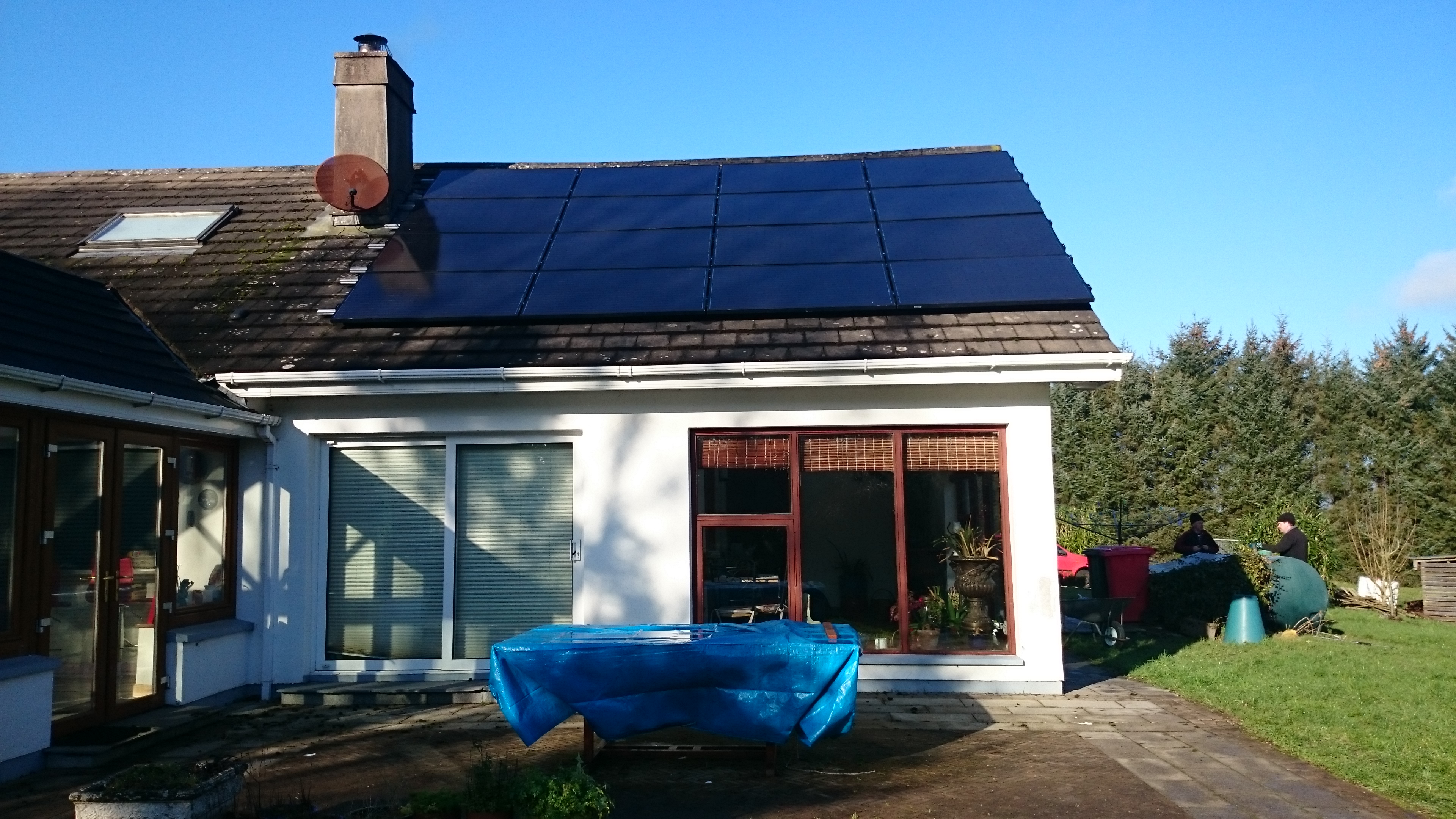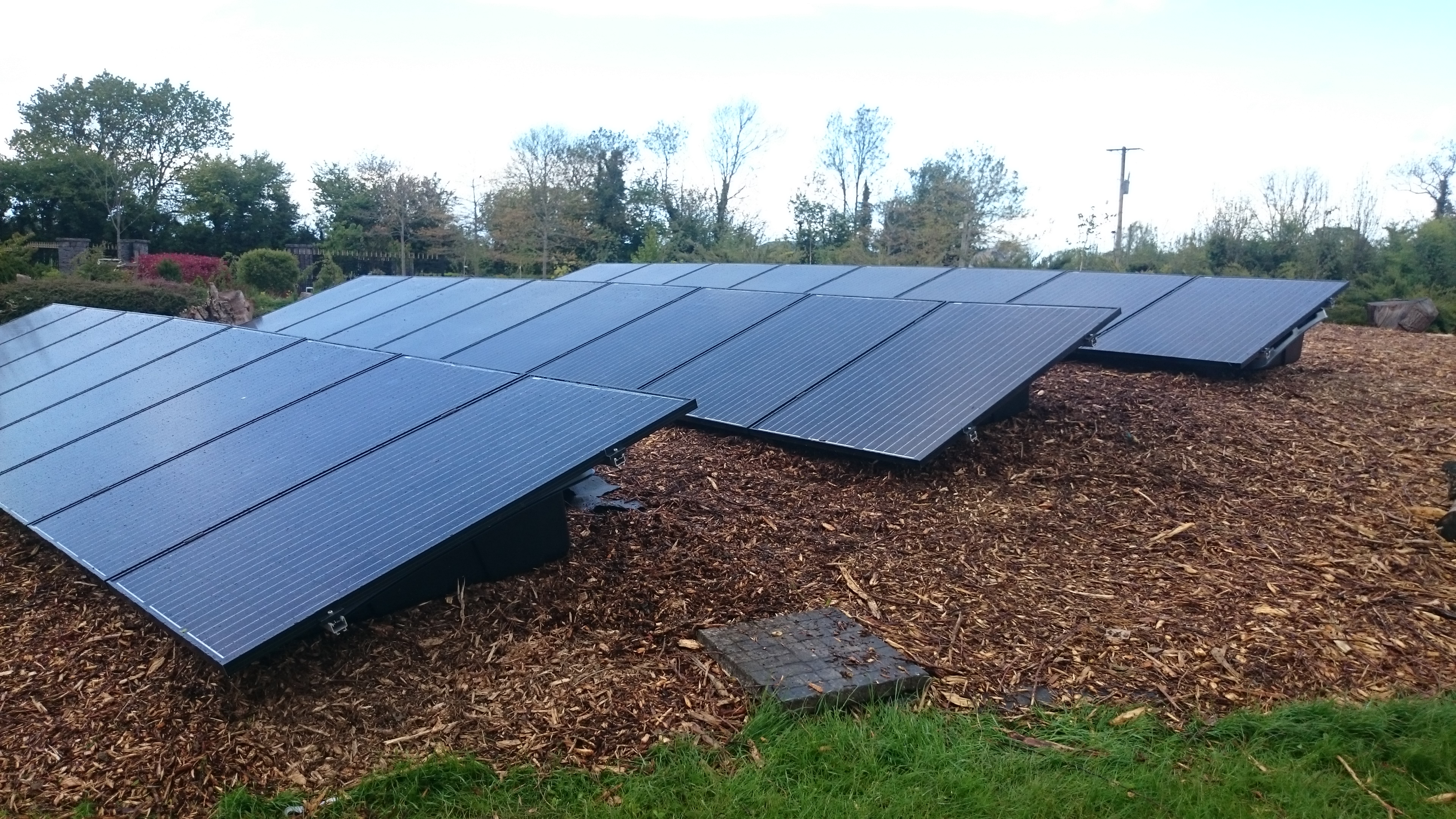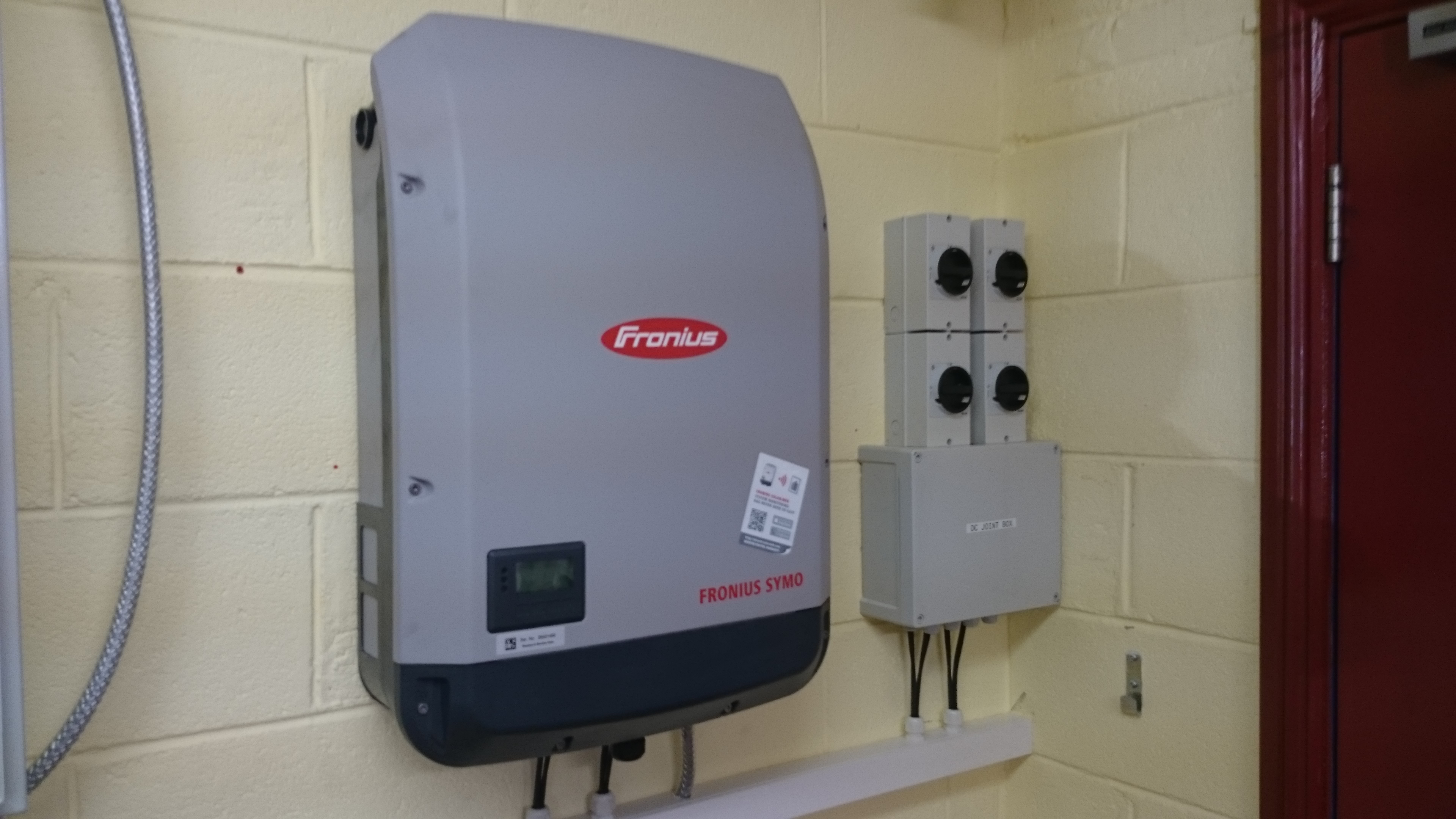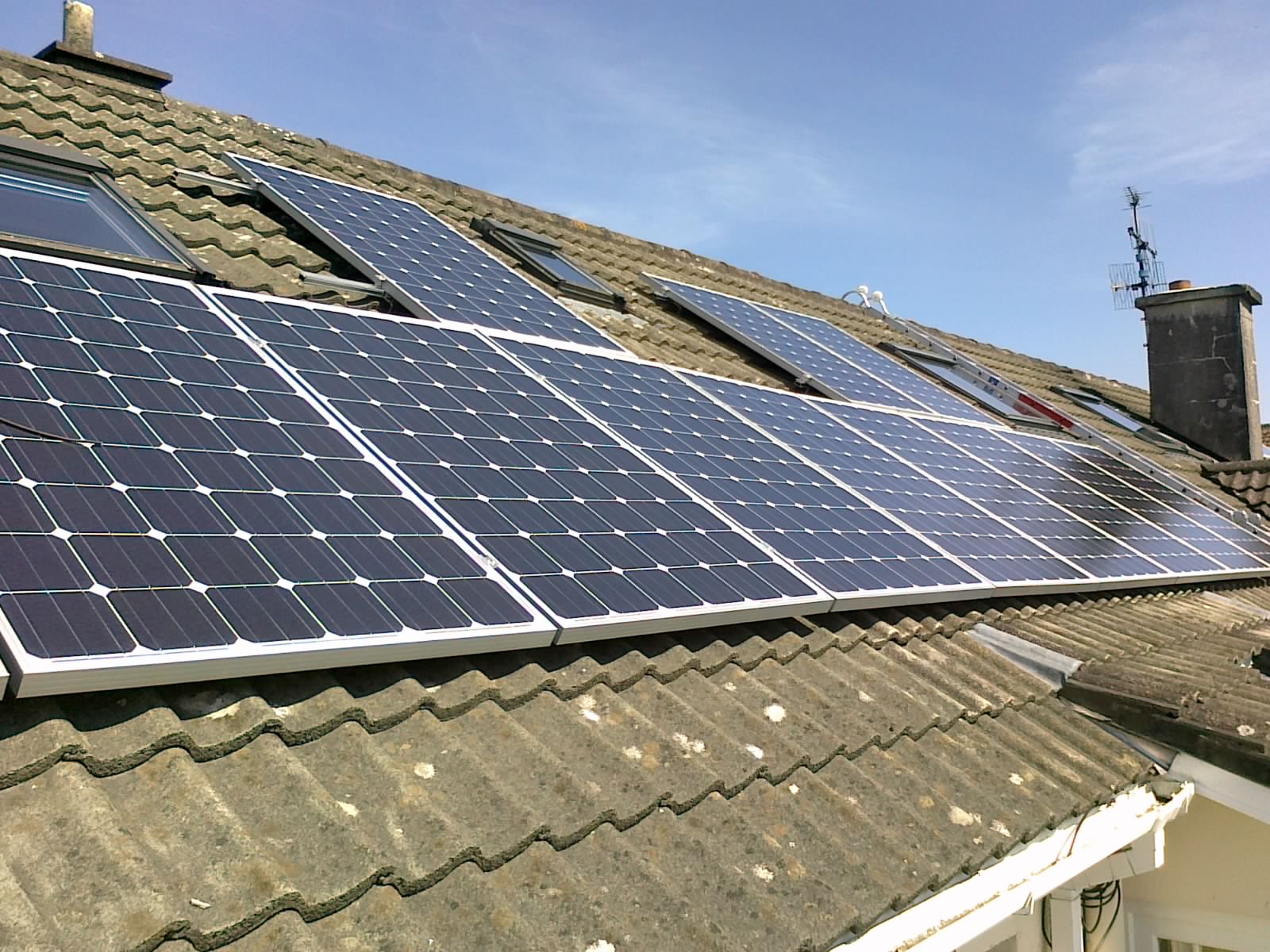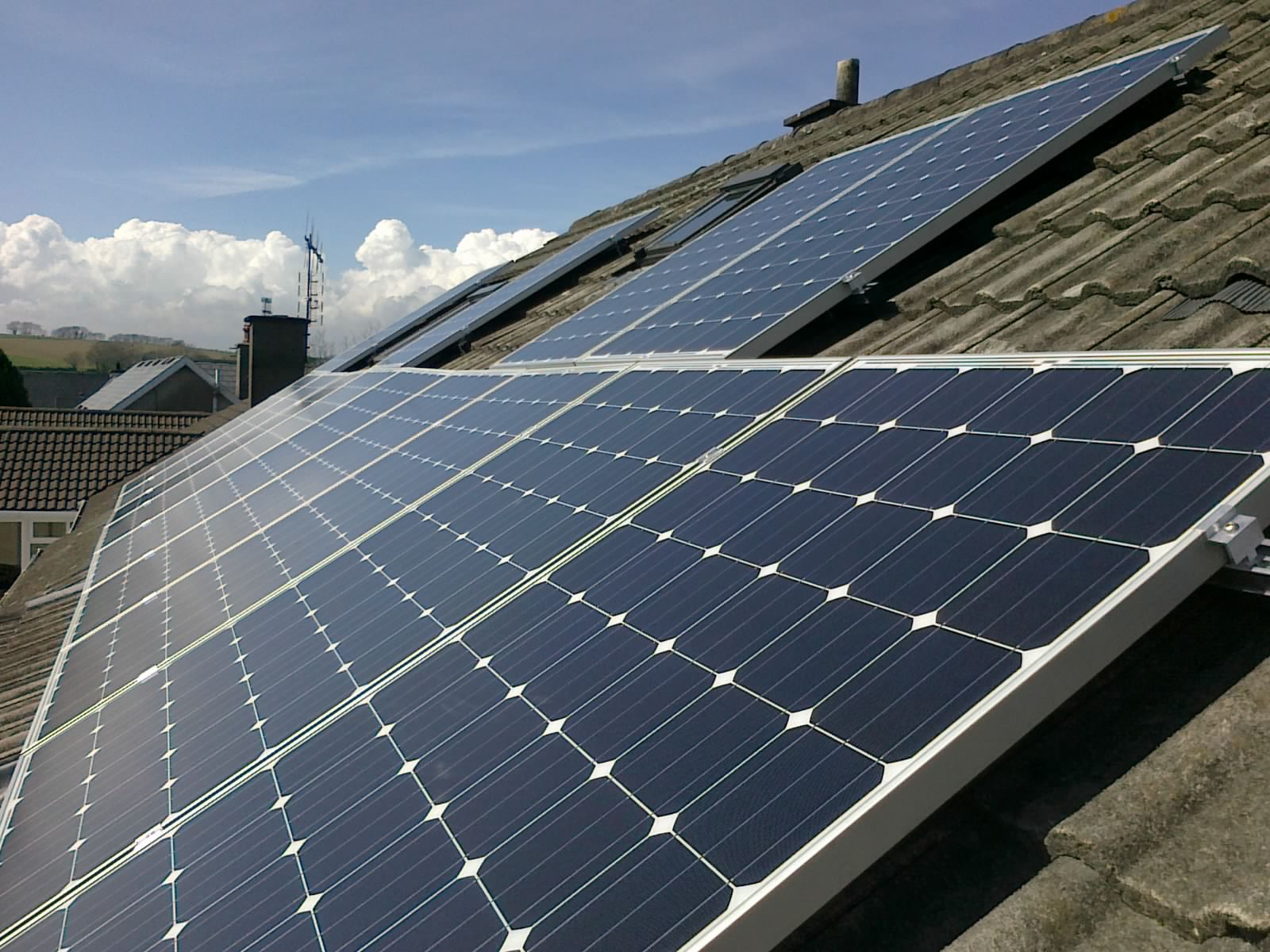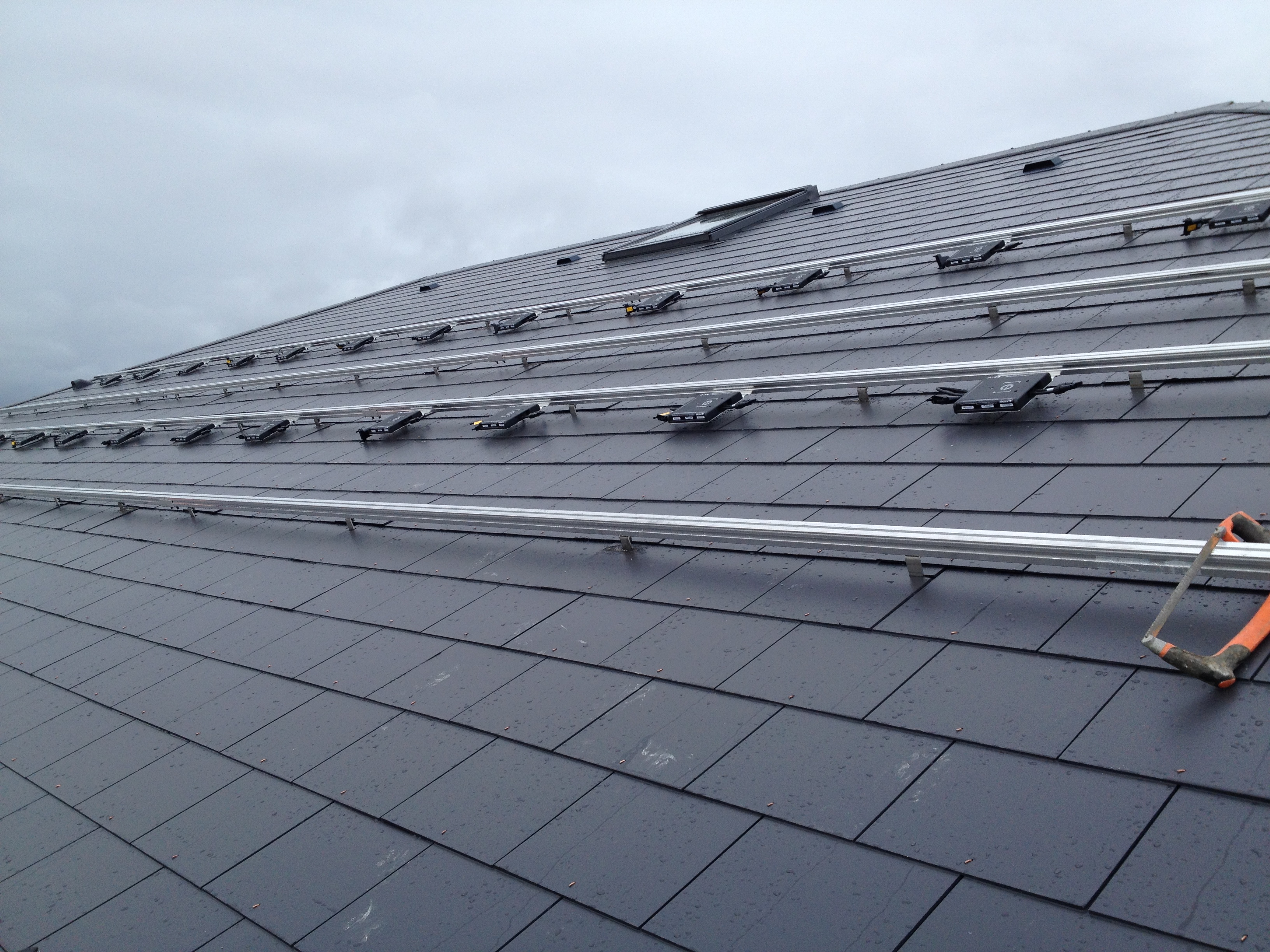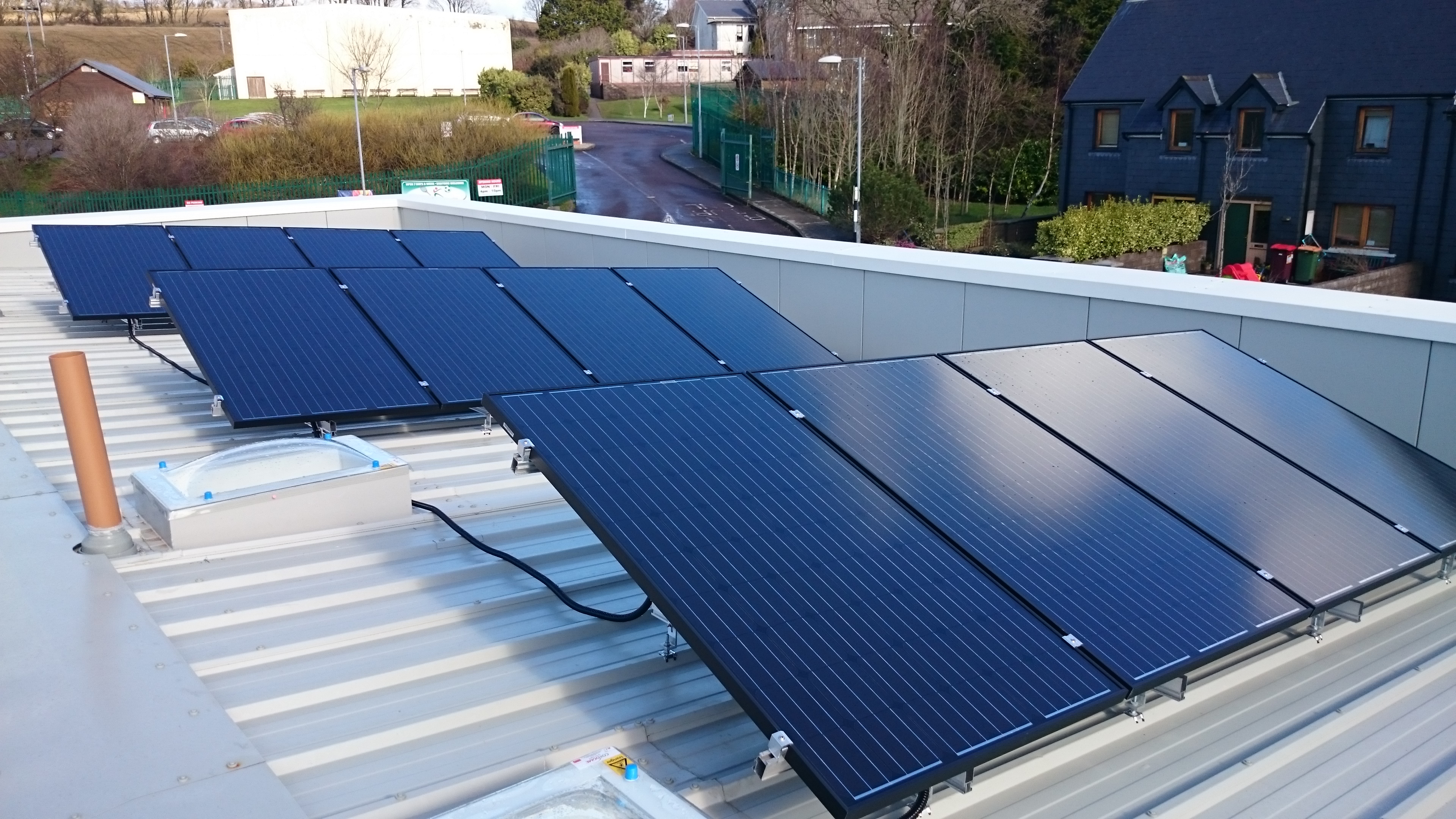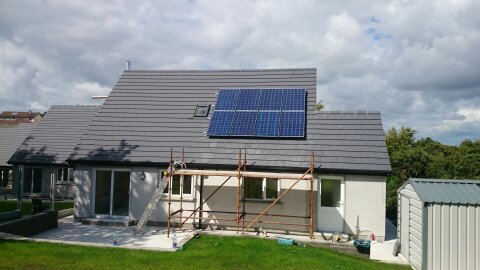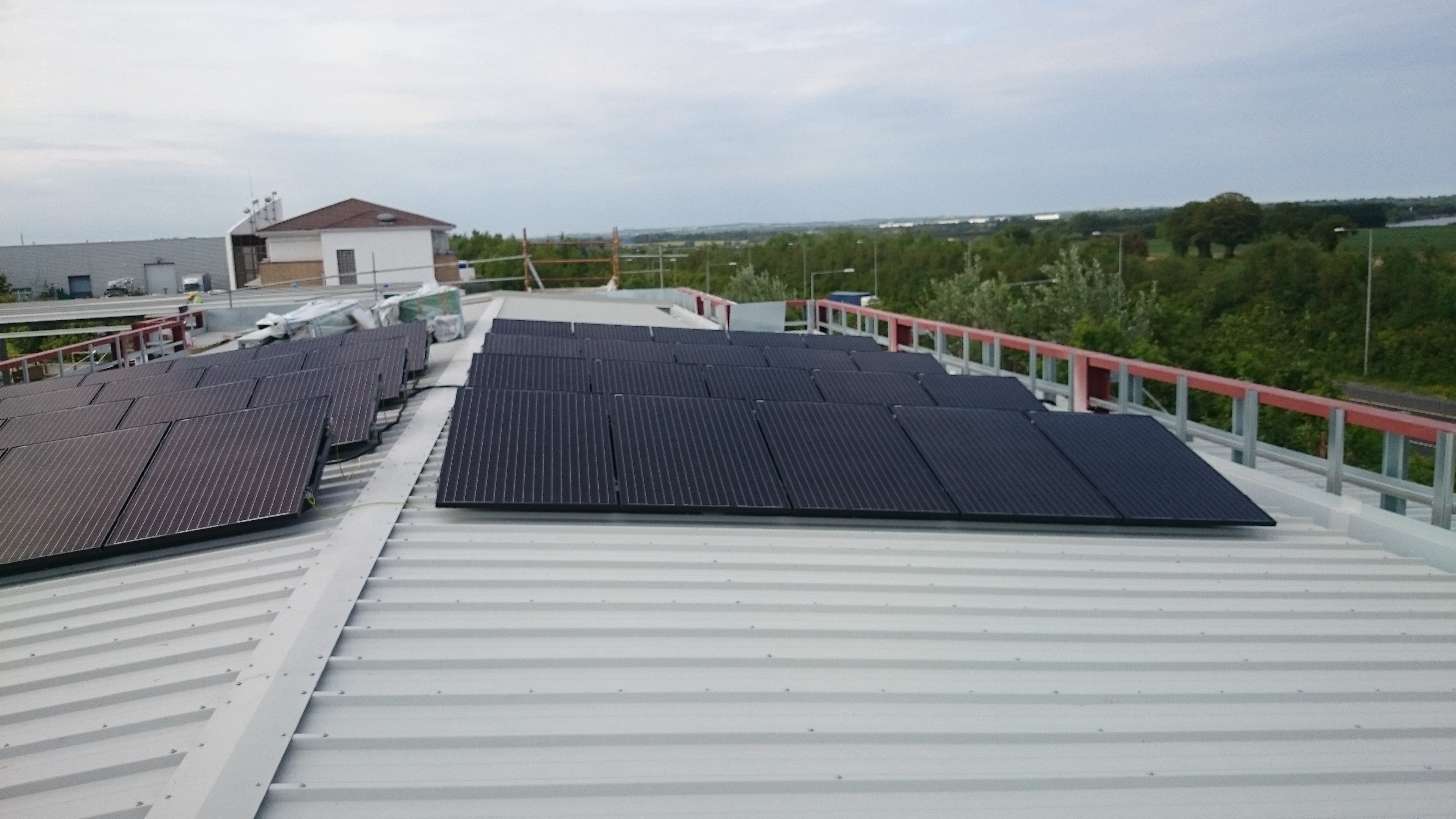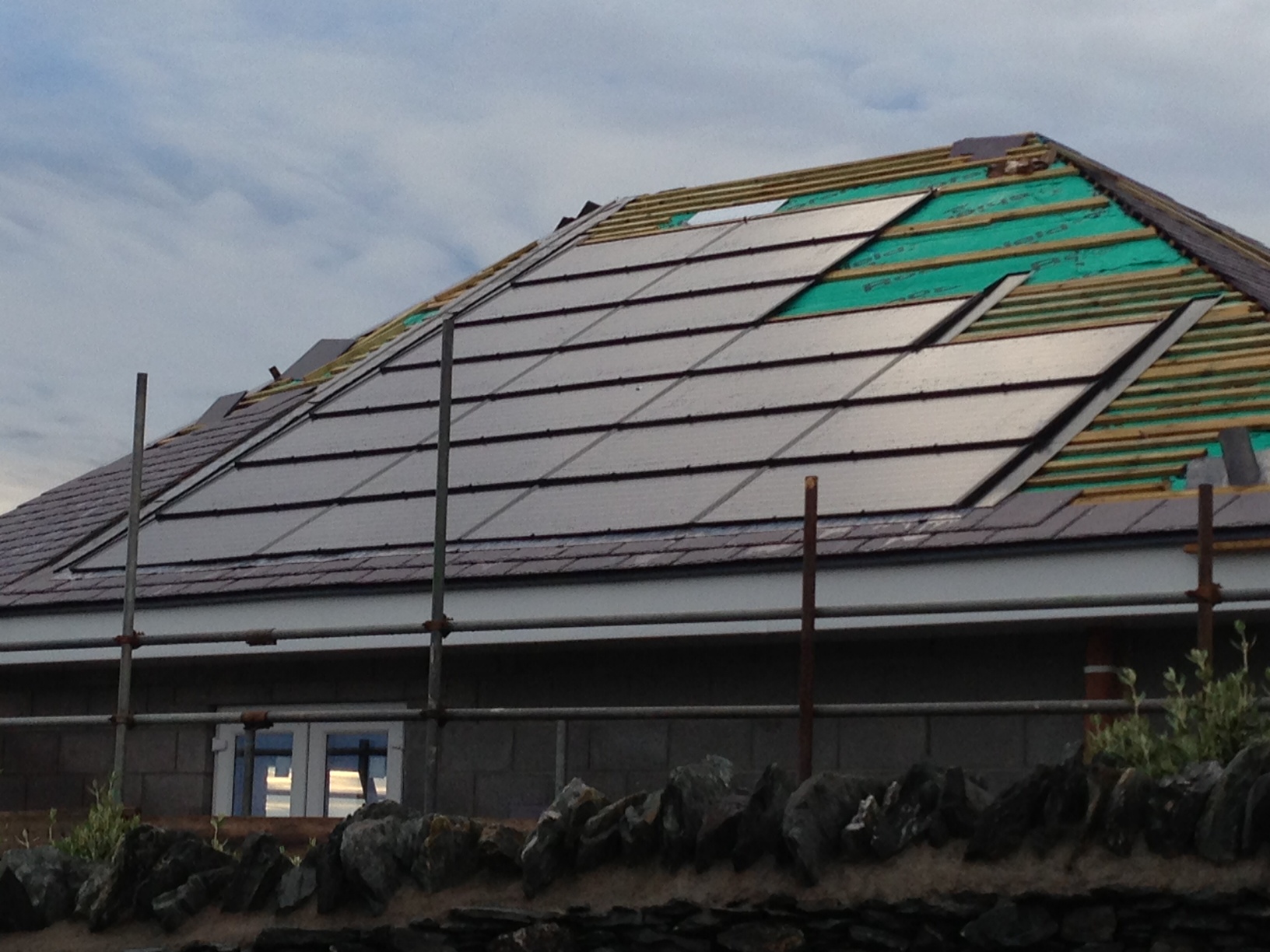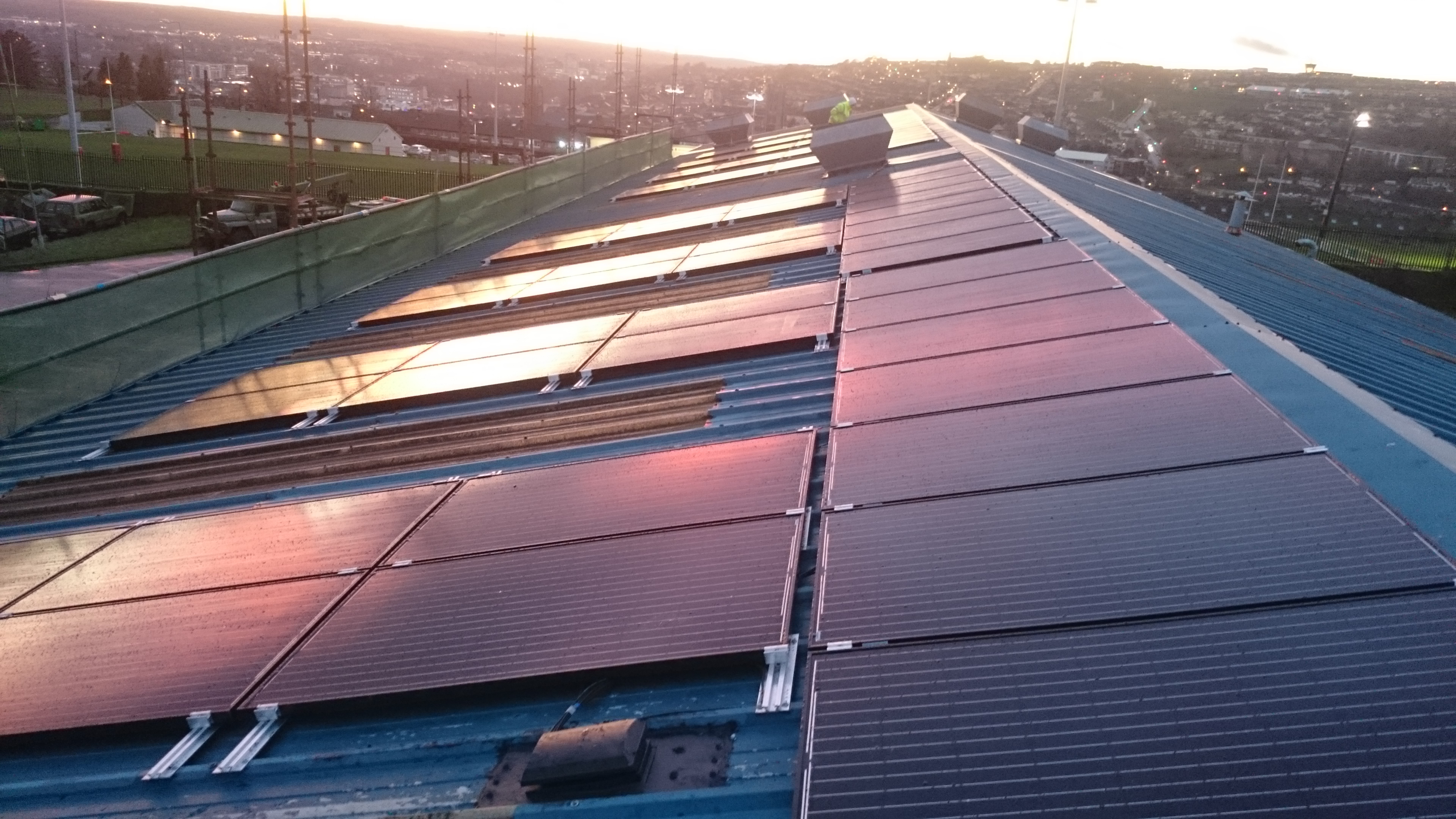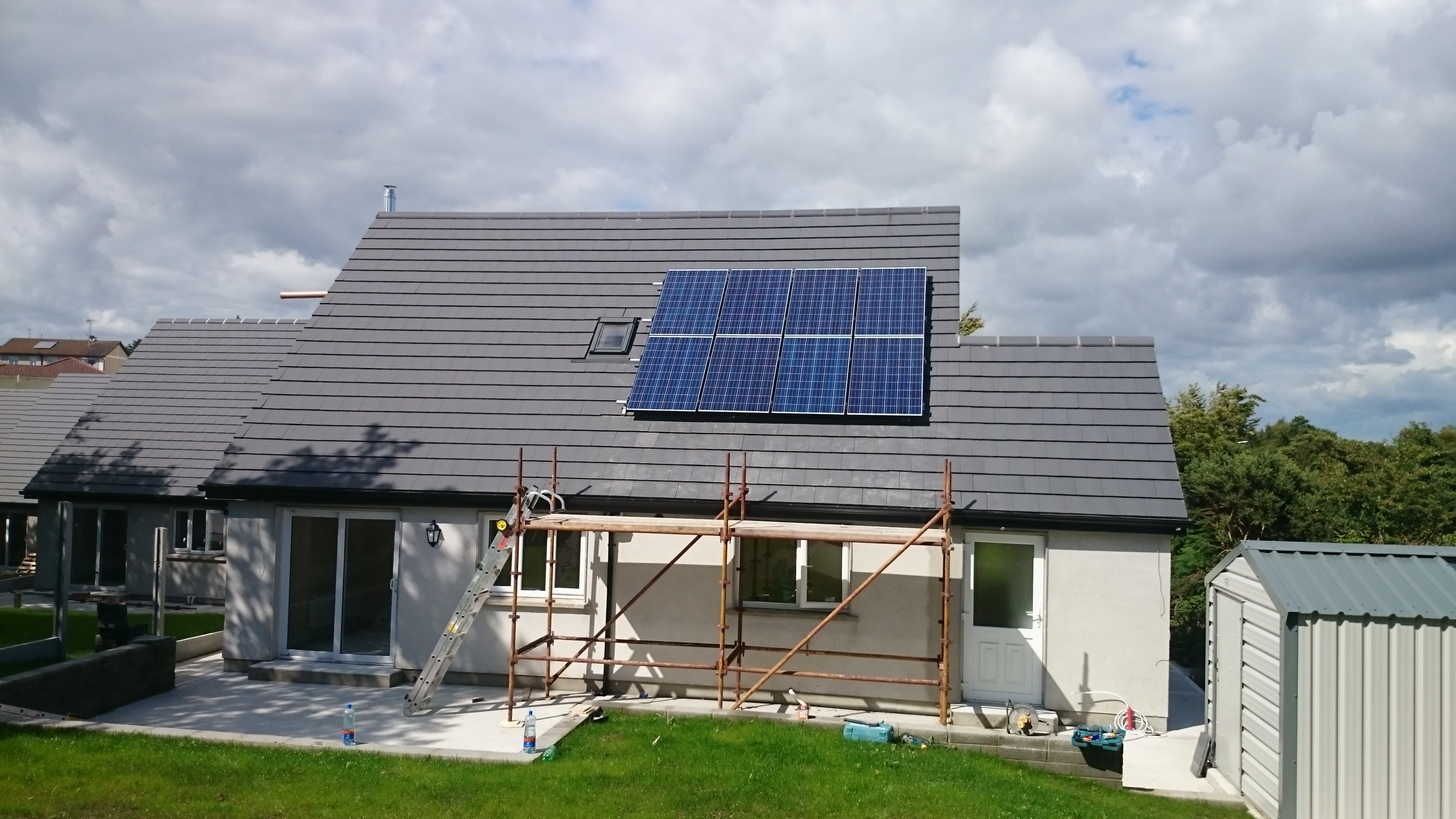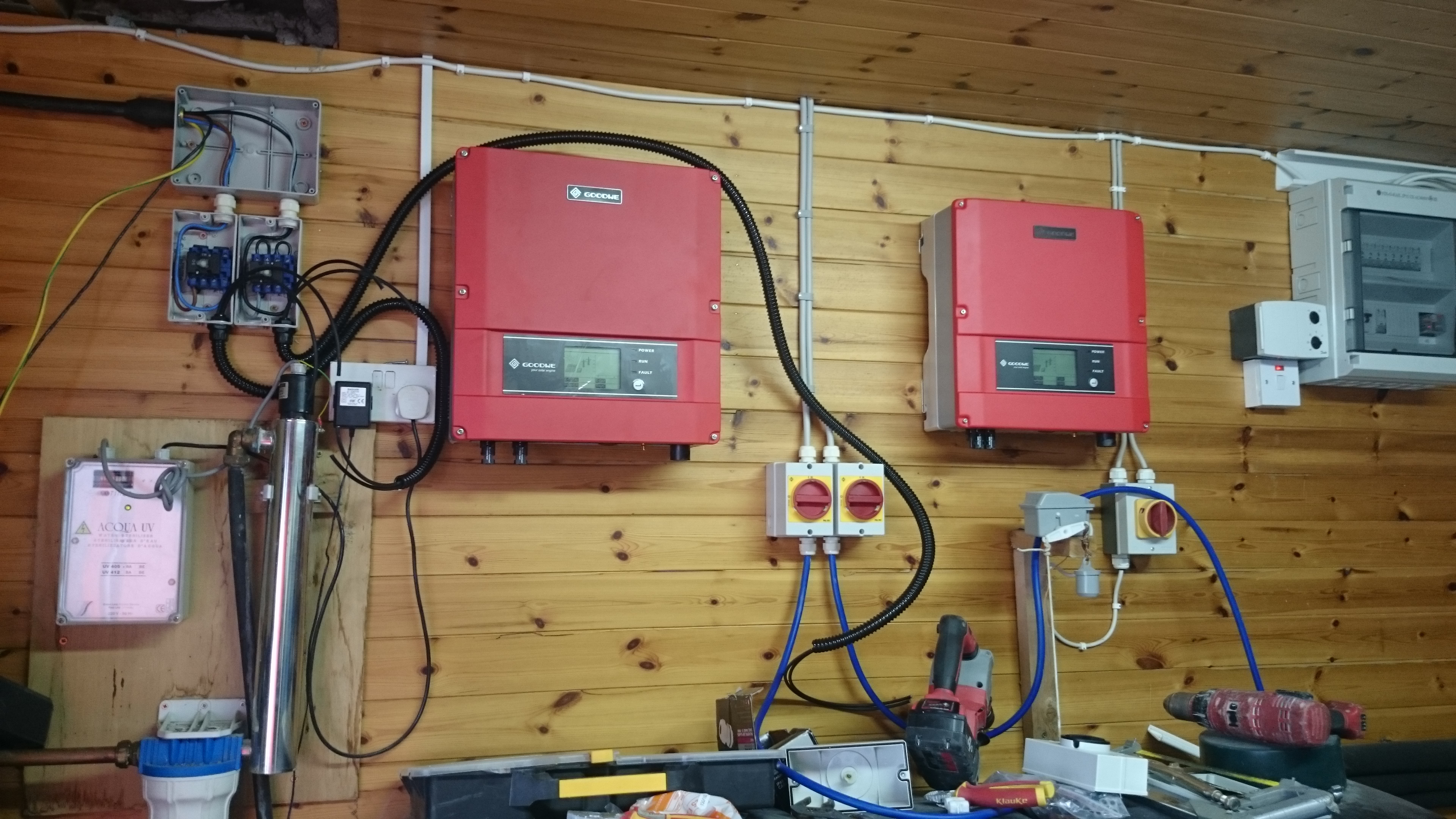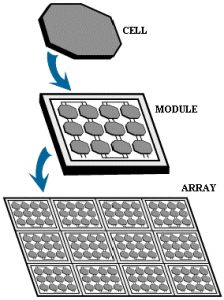Solar Photovoltaic is the production of Electricity from solar radiation.
It is captured and generated through panels otherwise called MODULES.
PV electricity can be connected to the mains supply (Grid Tied Systems) or battery storage called (Off Grid Systems). Further developments to this have led to hybrid systems which include a combination of both.
The most popular type of solar cell is the Crystalline Solar Cell. This is a manufactured product. Extremely thin layers of silicon (e.g.0.2mm) are sliced from high purity silicon with two Semi-Conductor layers – One layer dipped in Boron and the other layer dipped in either fleuron or phosphorous, giving you a (p) positive layer and a (n) negative layer.
When light falls on the cells the electrical charges in the semiconductor layers separate and produce DC current.
The DC voltage is directed to your inverter which changes the DC current to A/C (alternating current) which we use every day. This goes to your distribution point i.e. Fuse Box and is delivered anywhere in the house that there is a demand on.
The diagram above illustrates the operation of a basic photovoltaic cell, also called a solar cell. Solar cells are made of the same kinds of semiconductor materials, such as silicon, used in the microelectronics industry. For solar cells, a thin semiconductor wafer is specially treated to form an electric field, positive on one side and negative on the other. When light energy strikes the solar cell, electrons are knocked loose from the atoms in the semiconductor material. If electrical conductors are attached to the positive and negative sides, forming an electrical circuit, the electrons can be captured in the form of an electric current — that is, electricity. This electricity can then be used to power a load, such as a your house, farms commercial buildings.
A number of solar cells electrically connected to each other and mounted in a support structure or frame is called a photovoltaic module. Modules are designed to supply electricity at a certain voltage, such as a common 12 volts system. The current produced is directly dependent on how much light strikes the module.
Arrays can be mounted on roof ,in roof, on the ground, and with the experience of a qualified installer, the size system can be accessed either in a 1,2,3,4,5, kw per hour system,
Advanced Heating and energy systems offers a free consultation at any time.

